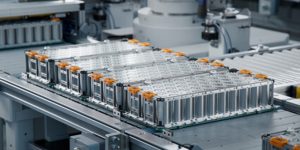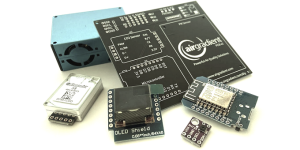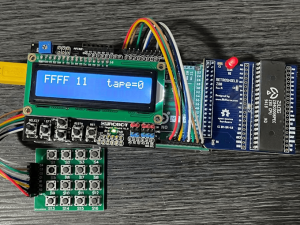In the 1837 a proposal of Charles Babbage for a mechanical machine (the analytical engine) has been taken into consideration. The purpose of that machine was to replicate the human behaviour in the case of the mathematical computations.This was the first approach to the computer science before the coming of electronics. That mechanical machine consisted in: a mechanical engine, an ALU (Arithmetic Logic Unit), the input data were to be provided by punched cards and the output computation by three readers punched cards. The computation language for programming the machine was very close to the assembly code and it had as the computation power well as the Universal Turing Machine. In fact it had a data memory of 1000 numbers and 50 codes and 40 arithmetical operations. The building of the analytical engine was delayed until the 1910 when Herny, the Charles Babbage’s youngest son, got the funds for assembling a “basic analytical engine”. Only In 1991, the London Science Museum built a complete version of Babbage’s Difference Engine No. 2 in compliance to the original specifications.
The actual general-purpose computers don’t work by mechanical systems, but by complex microprocessors which execute many instructions in a little time. The high level of the devices integration made the number of mathematical operations in a CPU grew up per year. Today The most of electronics devices are based on a microprocessor logic that means the digital electronics built the base for the evolution of computer science and so for the ICT.


















 Microsoft ha recentemente presentato VALL-E 2, un'avanzata Intelligenza Artificiale in grado di clonare la voce umana con una precisione sorprendente. Questo sistema, a differenza dei tradizionali sintetizzatori vocali, può replicare una voce umana dopo aver ascoltato solo tre secondi di registrazione. La capacità di VALL-E 2 di catturare le sfumature vocali e riprodurle con naturalezza ha raggiunto la parità umana, rendendola indistinguibile da una voce reale. I sintetizzatori vocali sono dispositivi o software progettati per produrre suoni vocali umani sintetizzati. Questi strumenti sono utilizzati in vari campi, tra cui la musica, l'intrattenimento, l'assistenza per persone con disabilità, l'Intelligenza Artificiale e molto altro. Essi rappresentano una fusione affascinante di tecnologia e creatività, con un impatto significativo su molti aspetti della nostra […]
Microsoft ha recentemente presentato VALL-E 2, un'avanzata Intelligenza Artificiale in grado di clonare la voce umana con una precisione sorprendente. Questo sistema, a differenza dei tradizionali sintetizzatori vocali, può replicare una voce umana dopo aver ascoltato solo tre secondi di registrazione. La capacità di VALL-E 2 di catturare le sfumature vocali e riprodurle con naturalezza ha raggiunto la parità umana, rendendola indistinguibile da una voce reale. I sintetizzatori vocali sono dispositivi o software progettati per produrre suoni vocali umani sintetizzati. Questi strumenti sono utilizzati in vari campi, tra cui la musica, l'intrattenimento, l'assistenza per persone con disabilità, l'Intelligenza Artificiale e molto altro. Essi rappresentano una fusione affascinante di tecnologia e creatività, con un impatto significativo su molti aspetti della nostra […] Le estati sempre più torride portano con sé una serie di sfide per le batterie delle auto elettriche, causando potenziali malfunzionamenti, riduzioni della durata e persino danni permanenti. Questi problemi non solo peggiorano le prestazioni del veicolo, ma ne compromettono anche l'affidabilità generale. Proprio come il freddo, anche il caldo estremo rappresenta una minaccia significativa per le batterie al litio, cuore pulsante delle auto elettriche moderne. Le alte temperature possono influenzare negativamente qualsiasi dispositivo tecnologico, comprese le auto elettriche, esponendole a rischi di surriscaldamento quando vengono lasciate al sole per lunghi periodi. Questa situazione è particolarmente critica in un contesto in cui la diffusione delle vetture elettriche rappresenta una delle principali sfide e opportunità per la mobilità sostenibile. Tuttavia, il […]
Le estati sempre più torride portano con sé una serie di sfide per le batterie delle auto elettriche, causando potenziali malfunzionamenti, riduzioni della durata e persino danni permanenti. Questi problemi non solo peggiorano le prestazioni del veicolo, ma ne compromettono anche l'affidabilità generale. Proprio come il freddo, anche il caldo estremo rappresenta una minaccia significativa per le batterie al litio, cuore pulsante delle auto elettriche moderne. Le alte temperature possono influenzare negativamente qualsiasi dispositivo tecnologico, comprese le auto elettriche, esponendole a rischi di surriscaldamento quando vengono lasciate al sole per lunghi periodi. Questa situazione è particolarmente critica in un contesto in cui la diffusione delle vetture elettriche rappresenta una delle principali sfide e opportunità per la mobilità sostenibile. Tuttavia, il […] AirGradient è un'azienda che progetta e produce dispositivi per il monitoraggio della qualità dell'aria professionali, accurati e di lunga durata, open source e open hardware. Questi monitor possono essere utilizzati per il monitoraggio della qualità dell'aria sia domestica che esterna. I monitor della qualità dell'aria di AirGradient sono progettati per essere economici e personalizzabili e sono dotati di un codice completamente open source in modo che gli utenti possano apportare facilmente modifiche. La natura open hardware permette anche di costruire in completa autonomia il proprio dispositivo personalizzato. In questo articolo andremo a descrivere come realizzare una versione base di questo dispositivo. Introduzione I dispositivi di monitoraggio di AirGradient sono dotati di sensori che misurano diversi parametri della qualità dell'aria come […]
AirGradient è un'azienda che progetta e produce dispositivi per il monitoraggio della qualità dell'aria professionali, accurati e di lunga durata, open source e open hardware. Questi monitor possono essere utilizzati per il monitoraggio della qualità dell'aria sia domestica che esterna. I monitor della qualità dell'aria di AirGradient sono progettati per essere economici e personalizzabili e sono dotati di un codice completamente open source in modo che gli utenti possano apportare facilmente modifiche. La natura open hardware permette anche di costruire in completa autonomia il proprio dispositivo personalizzato. In questo articolo andremo a descrivere come realizzare una versione base di questo dispositivo. Introduzione I dispositivi di monitoraggio di AirGradient sono dotati di sensori che misurano diversi parametri della qualità dell'aria come […] Affascinato dall'idea di costruire un computer fai-da-te UT-88 degli anni '80 a 8 bit, Evgeny Adamenkov ha scelto di seguire un approccio più moderno, realizzando il suo remake con un Arduino Mega 2560, un RetroShield Z80, un display LCD 16x2 e una tastiera 4x4. Incuriosito dall'idea di costruire un computer fai-da-te UT-88 degli anni '80 a 8 bit, Evgeny Adamenkov ha optato per un approccio più moderno, realizzando il suo remake con un Arduino Mega 2560, un RetroShield Z80, un display LCD 16x2 e una tastiera 4x4. Questo progetto non solo preserva l'essenza del computer originale, ma introduce anche una maggiore facilità d'uso grazie alla programmabilità dell'Arduino. Evgeny ha eliminato la necessità di saldature complesse e componenti vintage, rendendo il […]
Affascinato dall'idea di costruire un computer fai-da-te UT-88 degli anni '80 a 8 bit, Evgeny Adamenkov ha scelto di seguire un approccio più moderno, realizzando il suo remake con un Arduino Mega 2560, un RetroShield Z80, un display LCD 16x2 e una tastiera 4x4. Incuriosito dall'idea di costruire un computer fai-da-te UT-88 degli anni '80 a 8 bit, Evgeny Adamenkov ha optato per un approccio più moderno, realizzando il suo remake con un Arduino Mega 2560, un RetroShield Z80, un display LCD 16x2 e una tastiera 4x4. Questo progetto non solo preserva l'essenza del computer originale, ma introduce anche una maggiore facilità d'uso grazie alla programmabilità dell'Arduino. Evgeny ha eliminato la necessità di saldature complesse e componenti vintage, rendendo il […] La robotica educativa rappresenta una delle più avvincenti e potenti modalità di apprendimento contemporaneo, in grado di integrare efficacemente i principi di STEM (Scienza, Tecnologia, Ingegneria e Matematica) nelle aule di tutto il mondo. In un'era dove le competenze digitali sono diventate imprescindibili, l'adozione di programmi di robotica educativa non solo arricchisce il bagaglio conoscitivo degli studenti, ma stimola anche la creatività, la capacità di problem solving e il lavoro di squadra. In questo articolo, esploriamo come la robotica educativa sta rivoluzionando l'insegnamento delle discipline STEM e delineando le sue potenzialità per il futuro dell'educazione. La robotica educativa coinvolge gli studenti in attività pratiche e interattive, permettendo loro di costruire, programmare e manipolare robot. Questo approccio hands-on favorisce un apprendimento […]
La robotica educativa rappresenta una delle più avvincenti e potenti modalità di apprendimento contemporaneo, in grado di integrare efficacemente i principi di STEM (Scienza, Tecnologia, Ingegneria e Matematica) nelle aule di tutto il mondo. In un'era dove le competenze digitali sono diventate imprescindibili, l'adozione di programmi di robotica educativa non solo arricchisce il bagaglio conoscitivo degli studenti, ma stimola anche la creatività, la capacità di problem solving e il lavoro di squadra. In questo articolo, esploriamo come la robotica educativa sta rivoluzionando l'insegnamento delle discipline STEM e delineando le sue potenzialità per il futuro dell'educazione. La robotica educativa coinvolge gli studenti in attività pratiche e interattive, permettendo loro di costruire, programmare e manipolare robot. Questo approccio hands-on favorisce un apprendimento […]

